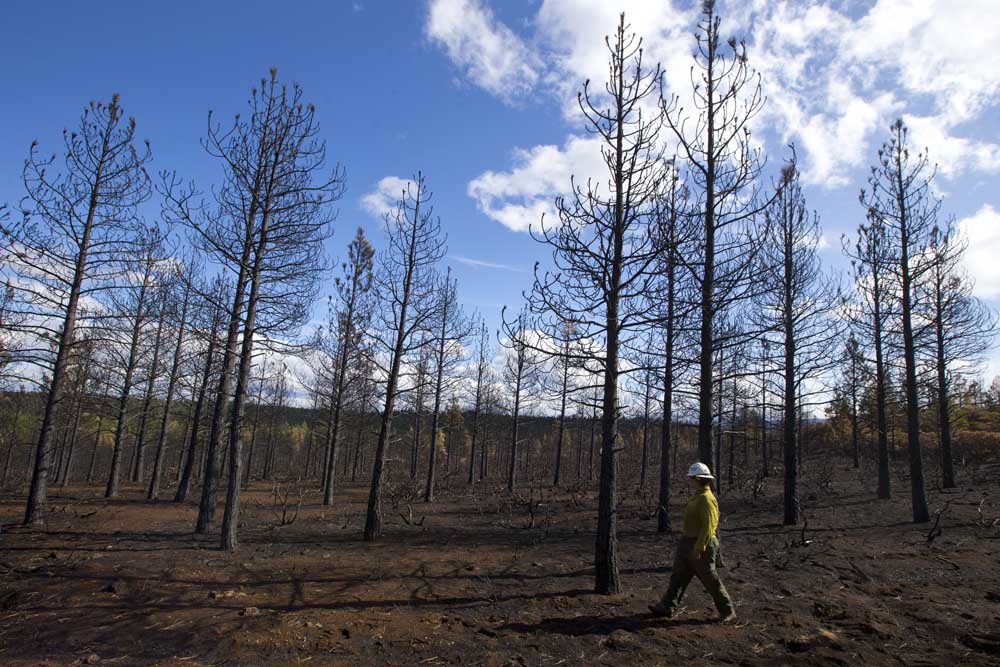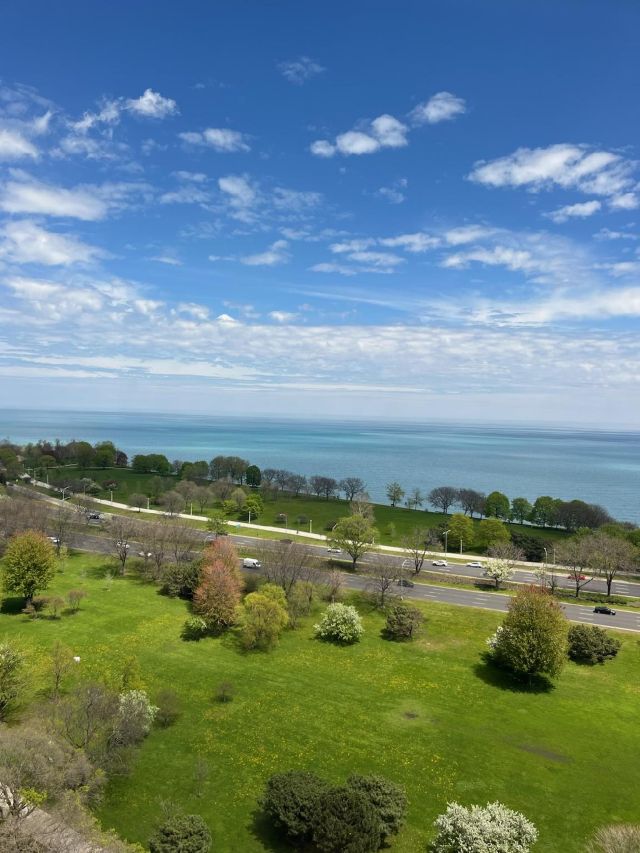Some ponderosa forests may not regrow after fires, study says
Published 12:00 am Friday, March 22, 2019

- Larae Guillory, a fuels specialist with the U.S. Forest Service, walks through a section of trees that had never been thinned, allowing fire to kill many trees on the east flank of the Milli Fire in Sisters in September 2017. (Bulletin file photo)
Climate change is not only making fire season hotter, drier and longer across the West, but it also may be making it harder for ponderosa pine forests to regrow after devastating wildfires, according to a study.
The study was published earlier this month in the Proceedings of the National Academy of Sciences, a scientific journal, and examined the relationship between climate trends and how immature ponderosa pine and Douglas fir trees respond after severe wildfires.
After looking at tree populations across the Western United States, the researchers concluded that low-elevation ponderosa pine forests, like those found in parts of Central Oregon, may be less likely to regrow after wildfires, due to warmer temperatures and drier soil.
Kimberley Davis, lead author of the study, said researchers observed that ponderosa pines in particularly warm, dry areas may be replaced by shrubs, grasses and other plants over the long term. In certain areas, Davis said it’s happening already.
“I was surprised by how many of our sites have already crossed these thresholds,” Davis said.
While Central Oregon was not examined as part of the study, local forest experts have noticed similar trends cropping up in low-elevation burn scars once dominated by ponderosa pine forest. Kerry Kemp, forest ecologist for The Nature Conservancy, said some of Central Oregon’s low-elevation areas are nearing the threshold where they may struggle to regrow, and could be replaced by more of a shrubland environment.
“Low-elevation ponderosa pine forests are very much at that transition zone,” Kemp said.
Ponderosa pines are a common sight in and around Bend, and Kemp said mature pines are well-adjusted to Central Oregon’s dry, fire-prone environment. Still, she said young trees, with thinner bark and less advanced root systems, can be vulnerable to fire, insect outbreaks and other hazards.
Davis said the study, which came together over the course of three years, looked at immature trees in particularly warm, dry portions of four regions — the northern Rockies, Colorado’s Front Range, high-elevation portions of the Southwest and Northern California — to determine how trees in borderline conditions responded after large wildfires over the past 30 years.
Davis said the researchers concluded that young ponderosa pine trees become less likely to regenerate after wildfires once soil conditions get too dry during the driest months of the year, a pattern that has been observed across the Western United States in recent years, Davis said.
“What we found was the climate … is becoming increasingly less suitable for tree regeneration,” she said.
For Douglas firs, which are also found in parts of Central Oregon, high temperatures and moisture during the spring months impacted whether the trees regenerated, Davis said.
Davis said the study may have impacts for forests like Central Oregon’s, which share some similarities to those involved in the study, though she cautioned against extrapolating too much.
“It would make sense that, in areas with similar climate conditions and similar forests, that (these findings) would also apply,” Davis said.
Brad Chalfant, executive director of the Deschutes Land Trust, said he’s seen shrubs and grasses begin returning in areas of the Deschutes National Forest where pines once stood.
“It essentially looks to us like we’re seeing the forest move up-slope,” Chalfant said.
Losing ponderosa pine cover could impact other plants and animals living in the forest, as well. Chalfant said invasive plants like cheatgrass, which can out-compete native plants and tends to dry out and become flammable earlier in the summer, may become more common. Additionally, Kemp pointed to the white-headed woodpecker, which relies heavily on ponderosa pine trees, as a species that could be impacted if low-elevation pine trees begin disappearing.
“If we don’t have large old pines on the landscape … we definitely might expect to see a declining trend,” Kemp said.
— Reporter: 541-617-7818, shamway@bendbulletin.com






